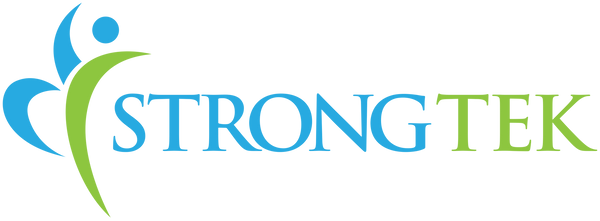Experts have identified seven movement patterns that will increase your overall functional movement fitness—hinge, squat, lunge, push, pull, twist, and gait. If you haven’t already, do a functional movement screening at home to get a feel for how effectively you can perform each of these movements.
Then, add the following exercises to your routine to improve your functional movement performance.
7 Moves for Functional Fitness
All these moves will help you reach your other fitness and health goals. Incorporate them into your workout at least two days a week to improve your functional fitness.
1. Hinge
Every time you bend over, you do a hinge. The thing is, most of us do it incorrectly, leading to lower back pain and injuries. Your shoulders shouldn’t round forward when you hinge, and your head shouldn’t hang down low.
With your feet shoulder-width apart, hinge forward from your hips as you keep your back straight and your knees slightly bent. Slowly raise, then lower back down. Do this movement 10 times. As you get stronger, add weight in each hand to fire up your glutes even more.
2. Squat
Mastering a squat will help you every time you need to bend down to pick something up. It will also help you go from sitting to standing.

Stand with your feet hip-width apart and your toes facing out slightly. Lower down as you push your hips back and keep your chest upright. Go down as far as you can while maintaining good form. In a full squat, your hips will almost touch your heels. If you have tight calves, hips, or glutes, that might not be very far. Work up to doing 20 full squats.
3. Lunge
Because they’re bilateral movements, lunges are great for improving your balance. They also work your glutes, quads, and hamstrings.
Start with your feet about hip-width apart. Step one foot forward and bend your back knee as low as it can go. Ideally, you want it almost to hit the ground. Then, push off with your front leg to return to standing. Do the same on the other side. Repeat 10 times on each side.Use a balance pad to cushion your back knee.
4. Push
Your push muscles help you put something away on the top shelf of your closet or pick your kid up above your head. Pushups are an excellent exercise for improving your push function.
In a perfect pushup, you’ll be on your toes in a plank position. Keep your body aligned, hips up, and head neutral as you come down to touch your chest to the floor, then push yourself back up again. If you can’t do them from your feet, put your knees down or simply push against a wall. Aim for 10 pushups, focusing on form. If you have tight wrists, a yoga foam wedge block can provide stability and support.
5. Pull
The opposite of a push is a pull. You use this movement when pulling something toward you, like getting a box down from a high shelf or bringing your toddler in for a hug.
A bent-over row is a great exercise to work your pull muscle group. Hinge forward slightly, holding a medium weight in each hand. Slowly bring each weight up toward your rib cage, then lower. Do 10 reps before standing up.
Pullups are another staple pull exercise, but they are very challenging to master. Build strength with bent-over rows before attempting to do a pullup at the gym.
6. Twist
Rotation or twist movements, such as looking behind your shoulder or throwing a ball, rely on a strong core. Add some Russian twists to strengthen your core and improve your rotation.

Sit on the ground with your knees bent and feet on the floor. Create a V-shape with your thighs and torso, straightening your spine at a 45-degree angle. Put your hands in front of you, clasping them together. Exhale and twist to the left. Inhale and return to center, then exhale and twist to the right. That’s one rep. Aim for 25 reps. Later, you can add weights to your Russian twists and experiment with taking your feet off the floor.
7. Walking (gait)
Naturally, we walk every day. But we often don’t think about how we walk. That’s where practicing your gait comes in. This helps you improve your posture so you can be more efficient when you walk and less injury-prone.
Watch yourself walk in a mirror, noting any issues, such as one foot flaring out to the side or your hips shaking side-to-side. Focus on walking with good posture, then advance to jogging and doing weighted carries, in which you carry weights in one or both hands as you walk.
Bottom Line
Focusing on functional fitness will keep you safe as you exercise. It will also help you with all of your daily activities and keep you strong as you age.
Learn more about how to improve your functional fitness and get more tips in the StrongTek Fitness Academy.
